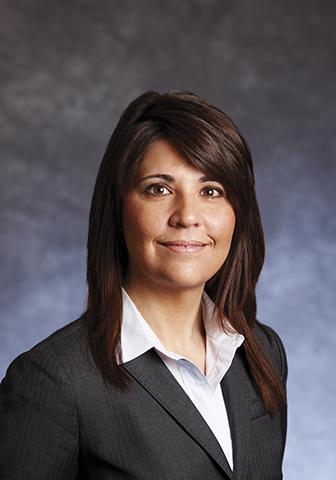 When one of Noha Waibsnaider’s loved ones passed away, she was overwhelmed by grief—which made the logistical hurdles of coordination and communication that much more challenging during an already difficult time.
When one of Noha Waibsnaider’s loved ones passed away, she was overwhelmed by grief—which made the logistical hurdles of coordination and communication that much more challenging during an already difficult time.
She yearned for a simpler way to find support, conduct all the necessary tasks and purposefully commemorate a life. That was the catalyst for the website GatheringUs, a lasting online space that brings communities together after a death to support each other and celebrate the life of their loved ones.
As part of a large family, she has organized many memorials and funerals, and so knew firsthand the challenges of coordinating family and friends—trying to keep everyone in the loop while planning multiple events and logistics, and doing it all through the emotional roller coaster of mourning.“I was grateful for the outpouring of support from my community, and I realized many wanted to help, yet struggled to find ways to be supportive. I created GatheringUs to provide resources and a simpler way to mobilize everyone and commemorate loved ones,” Waibsnaider explains.
The need is so clear, she says, noting that after launching the site just three months ago, they have already had 30,000 visitors and memorials from all over the world, representing diverse groups of different ethnicities, religions and generations.
“Death scares people, and they don’t want to talk about it, and then you add in the preconceived notions about how funerals are supposed to be. Our goal is to empower people to celebrate and honor their loved ones in a meaningful and personal way that helps them process the loss.”
An Impressive Pedigree
This latest venture sprang from a personal, relatable need, but Waibsnaider already possessed the business acumen that has allowed her to build it so successfully. A serial social entrepreneur and brand builder, she holds an MBA from Columbia Business School and started her career in brand management at Unilever for consumer staples such as Ragu and Lipton. She parlayed that success into a new venture and founded Peeled Snacks, an organic food company, in 2004. She grew and ran the brand for 13 years—vaulting it into the upper echelon by raising $20 million in equity financing and bringing healthy fruit and vegetable snacks to millions of consumers nationwide.
“When I started my last company, I was in a rush to grow and sell within a very short time. I wish in retrospect that I had set my sights on a longer-term horizon,” she says, which would have made it easier to ride the highs and lows and put less pressure on immediate results. Nevertheless, even with that perspective, there’s no denying the impact she made on the business world with her ambition and ingenuity.
Along the way Waibsnaider has been honored with numerous awards, having been recognized as a White House Champion of Change; one of the “Women to Watch,” from Jewish Women International; named to the list of “50 Fastest-Growing Women-Led Companies” by the Women Presidents’ Organization; recognized as a Columbia Business School Distinguished Alumna; and received the Ecademy Award for Entrepreneurship, also from Columbia Business School.
She advises other would-be entrepreneurs to identify a cause or void that they are passionate about, which will allow you to sustain meaning and purpose over time. However, you also have to make sure it has a viable financial model because you can only keep doing it if you can support the business. In addition, she urges entrepreneurs to ask for help from their community. “They want to be there to support you and be part of your success story,” Waibsnaider says.
While she builds her new company, she is in a mode of continuous education and outreach. Notably, she is a 360° Council Member of Reimagine, a nonprofit that hosts a public conversation around death and life celebrations, including a week-long festival in various cities on the topic. The festival in New York in October included 350 events that ranged from presentations by end-of-life doulas and palliative care physicians to art, music, comedians and more, in an inspiring collaboration designed to help others in their stages of grief.


 Author Bio
Author Bio

 By Laura Keidan Martin, National Chair of Katten Muchin Rosenman’s Women’s Leadership Forum and member of the firm’s Board of Directors and Executive Committee
By Laura Keidan Martin, National Chair of Katten Muchin Rosenman’s Women’s Leadership Forum and member of the firm’s Board of Directors and Executive Committee

 By Ann Miletti, co-lead portfolio manager of the Wells Fargo Asset Management Private Market Value (PMV) Equity team
By Ann Miletti, co-lead portfolio manager of the Wells Fargo Asset Management Private Market Value (PMV) Equity team
